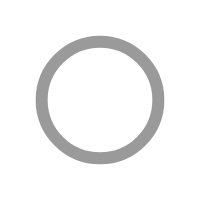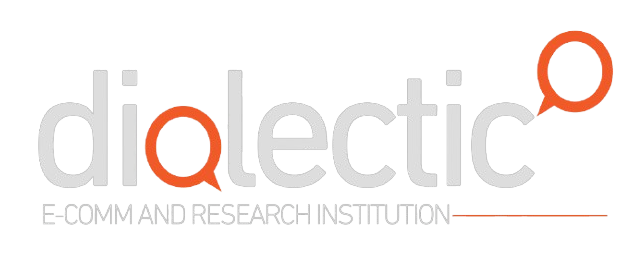تعتبر تغطية الصحفيين للاشتباكات والنزاعات المسلحة مهمة تفتح نوافذ العالم على واقع الأحداث وتسلط الضوء على تأثيرها على المجتمعات والأفراد. ويتعين على الصحفيين المختصين في هذا المجال أن يكونوا على استعداد لمواجهة التحديات الكبيرة، بدءًا من الخطر الجسدي وصولاً إلى مسؤوليتهم الأخلاقية في نقل الحقائق بدقة وموضوعية. كما يتعين عليهم الالتزام بمعايير السلامة والأمان والقوانين المحلية والدولية المعنية بحمايتهم أثناء أداء واجبهم الإعلامي.
حاورت "دياليكتيك" أربعة صحافيين يعملون في وسائل إعلامية محلية مختلفة وهم إبراهيم الغريب مراسل "صحيفة النهار" و"موقع "360"، ومحمد زناتي مراسل قناة "LBC "، وإبراهيم ضاوي مراسل "صوت بيروت إنترناشيونال"، ومحمد الجنون مراسل موقع "لبنان 24". فماذا كشفوا عن تجربتهم الميدانية؟
الخوذة والدرع قبل كل شي
يجمع الصحافيون الذين كانوا في الميدان على أهمية ارتداء الخوذة والسترة الواقعية باللون الأزرق والمطبوع عليها شعار PRESS”" طيلة فترة تغطيتهم الاشتباكات في مخيم عين الحلوة.
وتوزعت الأماكن التي مكثوا فيها طيلة الفترة الماضية بين المدارس وأسطح المباني. يؤكد إبراهيم ضاوي أنه "قبل الاستقرار في أي مكان على مقربة من الاشتباكات يجب أخذ إذن مسبق من الأهالي خاصة إذا كانت التغطية من على سطح مبنى سكني". أما محمد زناتي فيقول أن "الطبيعة الجغرافية لمخيم عين الحلوة تجعله يقع بين مجموعة من التلال المطلة عليه ما يسهل عملية أخذ اللقطات والظهور في رسائل مباشرة، ولم نمكث في مكان واحد طيلة فترة الاشتباكات بل كنا ننتقل بين المحاور والتلال لضمان إيصال الصورة الاوضح والأوسع للمشاهدين". بدوره، يؤكد محمد جنون أن "الحيطة والحذر في اختيار الأماكن هما الأولوية بالنسبة له مع مراعاة السلامة العامة للطاقم الصحفي المتواجد في الميدان". هذا الأمر، يتقاطع مع ما يقوله إبراهيم الغريب من حيث اختيار المكان المناسب لإظهار أفضل وأشمل صورة للمشاهد.
يروي إبراهيم ضاوي ما حدث معه يوم قصف الاحتلال الإسرائيلي مدينة صور في شهر رمضان المبارك الماضي، حيث كان يتواجد في فندق قريب من مكان الحدث وشاهد الزجاج يتساقط على أحد زملائه ما أدى الى إصابته بالرأس. من هنا، بات يفضل عدم البقاء في مكان الاشتباكات أو على مقربة منها، ويختار أن يعود في الصباح الباكر لمزاولة مهامه الصحفية.
أما بخصوص التنسيق مع القادة الأمنيين داخل المخيم وإعلامهم بمكان تواجد الصحفيين والمراسلين لضمانة سلامتهم، يقول محمد الجنون أنه "لم يكن هناك تنسيقا مباشرا مع القوى الأمنية والقادة الأمنيين داخل المخيم ولكن في حال حدث أي طارئ يكون التنسيق مع القوى الأمنية اللبنانية أو الجهات المعروفة في المنطقة المتواجدين فيها".
في المقابل، ينسق إبراهيم ضاوي مع الجيش اللبناني حصرا خاصة خلال تواجده داخل المخيم أو على أطرافه، ويأخذ بعين الاعتبار "التوجيهات التي يتلقاها من قيادة الجيش كونها الجهة المخولة حماية هذه النقطة"، وفق تعبيره. بدورهما، يعمد كل من محمد زناتي و إبراهيم الغريب إلى الاستفادة من علاقتهما مع الجهات الأمنية وقوى الامن الداخلي خلال تواجدهما للتغطية. ويضيف الغريب أنه "ما من تنسيق مع القادة الأمنيين "الفلسطينيين" داخل المخيم، كما أنه يحاول قدر الإمكان تجنّب التنسيق مع الجيش اللبناني دون الكشف عن الأسباب، إلا في اليوم الأخير من تغطية الاحداث بعد ان أوعز عنصر من الجيش لابراهيم والطاقم الصحفي التصوير بزاوية بعيدة حرصا على عدم إظهار الجيش اللبناني".
التحقق من المعلومات هو الأهم
ينجرف البعض وراء الإشاعات أو المعلومات غير المؤكدة، من هنا تتضاعف مسؤولية الصحفيين والمراسلين حول التحقق من مصداقية المعلومات عبر مصادر متعددة قبل نشر أي خبر.
يتنقل إبراهيم الغريب بين مكتب التحرير والميدان خلال جمعه للمعلومات والتحقق منها، ففور نشر خبر معيّن "يقوم بإرساله إلى المنصة التي يعمل لصالحها ليتم التحقق منها عبر مصادر المؤسسة بالإضافة الى التنسيق مع الزملاء من وسائل الإعلام المختلفة المتواجدين على الأرض من خلال التحقق من الخبر، ليقوم بعدها بإذاعة الخبر ونشره مع حرصه على التنسيق الدائم مع غرفتي العمليات والأخبار". أما محمد زناتي، فهو "يحرص على التحقق بنفسه من المعلومات من عدة مصادر "موثوقة" خاصة في زمن مجموعات الواتساب التي تنشر أخبارا كثيرة على مدار اليوم ما يجعله أمام اختبارا معقدا يتعلق بالمصداقية والدقة". ويعتبر زناتي أنه من الممكن أن "يلعب التحليل الميداني دورا مهما في إدارة المعلومات على الجبهة خاصة بما يتعلق بخرق الهدن بين الطرفين أو مقاطع الفيديو التي تنشر أو تصله عبر هاتفه عن تجدد الاشتباكات".
من جهته، يعتبر محمد الجنون أنه "لعل أكبر المسؤوليات الملقاة على عاتق الصحفي الميداني هي التحقق من المعلومات. فالصحفي يجب أن يمتلك المبادرة السريعة في التمييز بين الخبر الدقيق والأخبار المغلوطة، وذلك عبر الاتصال بالمصادر الرسمية المعنية بالأحداث مع مراعاة الخطوط الحمراء في فتح قنوات مباشرة للاتصال مع "الإرهابيين" وهذا ما كان يشكل تحديا كبيرا في نقل المعلومات".
بين خطر الصراع وواجب الإعلام
ينصّ الفصل السادس من قانون الاعلام المرئي والمسموع اللبناني في المادة ٣٣ أنه "تتحمل المؤسسات التلفزيونية والاذاعية المسؤولية المترتبة قانونا عن أي خطا في ممارسة نشاطها"، وهو ما يرتبط بعمل المؤسسات الإعلامية في نشر المعلومات وإلى أي مدى يتمّ التحقق منها قبل نشرها وما إذا كان هناك موازنة بين المسؤولية المجتمعية وبين بثّ المعلومة.
بالنسبة لمحمد الجنون فإن "الموازنة بين أخلاقيات المهنة والتغطية على مقربة من الجبهة هي الأهم، فالصحفي في الميدان هو المسؤول عن نقل المعلومات والحقائق وعن عدم تحريف الواقع خلال التغطية. فأخلاقيات مهنة الاعلام والواجب الصحفي يحتمان ضرورة عدم بث صور خادشه للإنسانية ومشاعر الناس او تحمل طابعا تعيسا مع الإصرار على عدم الانجرار وراء "السكوب" مع الاخذ بعين الاعتبار سياسة المؤسسة التي يعمل بها".
بدورهما، يتفق إبراهيم ضاوي ومحمد زناتي مع الجنون ولكن يشدد ضاوي في المقابل "على أهمية تحييد المدنيين قدر المستطاع عن عدسات الكاميرا لا سيما عند تواجد عملية نزوح في صفوف الأهالي وتدارك خصوصيتهم". من هنا، على الصحفيّ أن يختار "أن يقف في مكان مناسب نوعا ما لنقل المشهد العام مع التنبّه لكيفية أخذ اللقطات عبر التنسيق مع المصور".
أما محمد زناتي، فهو يحاول قدر الإمكان "الموازنة بين نشر المعلومات وأخلاقيات المهنة الصحفية، مقل على سبيل المثال لا الحصر الامتناع عن ذكر أسماء مصابين الجيش اللبناني بالكامل أو تصوير الأطفال والنساء داخل أماكن النزوح وهذا ما تشدد عليه سياسية المؤسسة التي يعمل بها".
في السياق نفسه، يحرص ابراهيم الغريب على التوازن بين نشر المعلومات وبين الحفاظ على مشاعر المشاهدين، ويذكر في معرض حديثه "أنه تعرّض لموقف محرج على الهواء بعد أن شتمه أحد المارة وهو يؤدي رسالته المباشرة، لكنه التزم بضبط النفس وحاول السيطرة على التوازن في إيقاع نقل الرسالة".
حتى الآن يتم تنظيم الإعلام اللبناني حاليًا بموجب قانون الصحافة لعام 1962 وقانون الإعلام المرئي والمسموع لعام 1994. بالتعاون مع وزارة الإعلام، حيث استند النص المنقح إلى مسودة قانون الإعلام المتواجدة في لجنة الإدارة والعدل البرلمانية منذ يوليو/تموز 2021، ويعكس مستجدات مهمة. (هون في اشكالية وانتقاد لوزارة الاعلام انو حتى الان قانون الاعلام او مهنة الاعلام غير منظمة بشكل واضح والعنواوين الموضوعة عامة ما فيها تفاصيل تعرف الوسائل الاعلامية واجباتها بالضبط خاصة بالمواد المتعلقة بتغطية مناطق النزاع)
إدارة القلق والتوتر النفسي
كتبت فاطمة زكي أبو حية مقالا في "معهد الجزيرة للإعلام" قالت فيه إن "الاهتمام بالصحة النفسية للصحفيين أصبح توجها عالميا، وأنه بين الحروب القصص المأساوية، والتهديدات ومحاولات إيقافٍ عن أداء الرسالة، مع اعتقالات ومخاطر تجعل القتل احتمالا واردًا.. كل هذا قد يراه الصحفي ويعيشه أثناء عمله، عدا عن الضغوطات المتعلقة بإنجاز المهام كالسرعة والدقة. ويحدث أحيانا أن يتعرض الصحفي لكل ذلك بينما هو جالس خلف مكتبه، دون النزول إلى الميدان، وبلا أي إرهاق جسدي، فيراه البعض في مهنة "مُريحة" يُحسد عليها".
بالنسبة لإبراهيم ضاوي إن ""ضبط النفس" والقدرة على الظهور بالبث المباشر بكل أريحية هو الأهم"، ولكنه لا ينكر في الوقت نفسه "أنه يواجه بعض الضغط العصبي كالتوتر جراء الرصاص الطائش. فعلى الرغم من حماية الرأس والصدر عبر الخوذة والدرع هناك أجزاء مكشوفة كالعين، الرقبة واليدين". أما عن الضغوطات النفسية خلال أداء العمل في الميدان كمشاعر الحزن والقلق فيطغيان عليه "عند سماع قصص النازحين والهاربين من المعارك ما يدفع إبراهيم الانسان بعيدا عن كونه صحفيا إلى أن يتخيل نفسه مكان النازحين".
ويشارك محمد زناتي الضغوطات النفسية التي أشار إليها ضاوي عند "سماع صوت القذيفة للمرة الأولى، حيث يمكن للخوف أن يتسلل ولكن بعدها يصبح الأمر عاديا". بالنسبة إليه، "من المهم أن يمتلك الصحفي القدرة على ضبط أعصابه، فهو في حرب وليس في مكان للتسلية، وبالتالي عليه أن يضع كل الاحتمالات كالإصابة بالرصاص أو بالشظايا".
يوضح محمد الجنون أنه حتى "وإن شعر الصحفيّ بالضغط والقلق، فذلك لا يجب أن يطغى على ضرورة الحصول على المعلومة ونقلها بدقة دون إظهار أي مشاعر شخصية كالقلق أو الخوف أو التوتر". بالنسبة إليه، "إن التواجد مثلا مع عدد من الزملاء في مكان واحد خلال التغطية يمكن ان يشكل دائرة آمنة".
أما إبراهيم الغريب، فهو يربط عامل القلق والتوتر بمدى ليونة التعامل بين المؤسسة التي يعمل معها، "فلكما ازدادت السلاسة في التواصل مع غرفة الأخبار، ارتاح الصحفيّ في نقله الوقائع للمشاهدين، لكن ذلك لا ينفي أيضا الشعور بالخطر عند اشتداد حدة المعارك".
تواجه صحافة النزاعات في لبنان تحديات هائلة اليوم مع طفرة ما يسمى صحافة المواطن ومجموعات الأخبار التي تنشر معلومات كثيرة يومية دون تدقيق، ومع تقدّم الأجندات الإعلامية لبعض المؤسسات التي تحتم على الصحفي أحيانا نقل ما يخرج عن ارادته أو أخلاقياته المهنية والإعلامية.
فالصحفيون يتعرضون على خطوط الجبهة الأمامية وفي الميدان لضغوط نفسية وجسدية خلال تغطية الأحداث المسلحة.

تقدير موقف
نناقش القضايا السياسية الرئيسية على المستويين المحلي والدولي، من تحليل السياسات الحكومية إلى القضايا الجيوسياسية والعلاقات الدولية. نقدم تغطية متعمقة للأحداث والتطورات السياسية، مع دراسات وتحليلات تسلط الضوء على التحديات والفرص في المشهد السياسي المعاصر.
عرض جميع المدونات >

0 التعليقات
اترك ردًا
لن يتم نشر عنوان بريدك الإلكتروني. الحقول المطلوبة مميزة بعلامة *